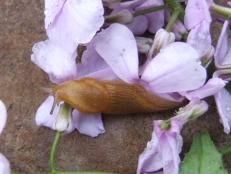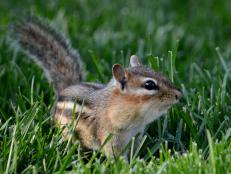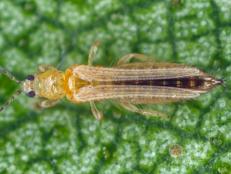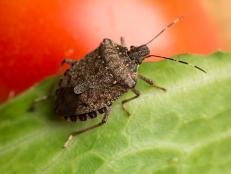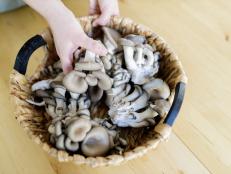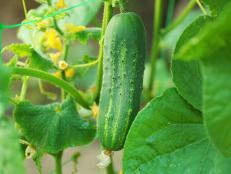How to Get Rid of Japanese Beetles
Get rid of Japanese beetles with a few of these easy strategies.
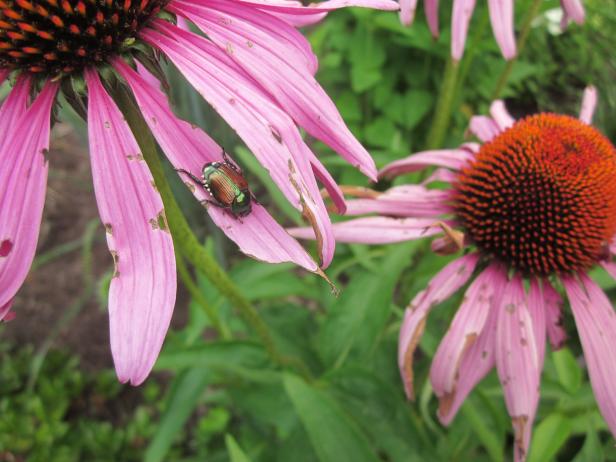
Julie Martens Forney
Japanese beetles aren’t picky about what flowers they chew and even attack the otherwise pest-proof purple coneflower.
Japanese beetles are the bane of the summer garden. The adults feed for roughly six weeks, destroying plants. Their favorites are things like roses, perennial hibiscus, raspberry bushes and any fruit tree. When there are enough of them, they will eat plants they usually pass up, including canna leaves and purple coneflower.
44 Common Garden Pests 45 Photos
The best offense is a good defense. Learn about common garden pests, including Japanese beetles, how to spot their damage and how to get rid of them in your garden.
An unwelcome import from Japan, the Japanese beetle was first found in North America in 1916. Roughly 3/8 inches long with coppery green coloring, these leaf eaters are found across much of the United States, but are most common east of the Mississippi. In adult stages, these beetles are aggressive and indiscriminate pests, consuming the foliage or flowers of over 300 varieties of ornamental and agricultural plants. Damage to trees and plants from these easily identified pests can be extreme, but problems begin elsewhere while the insect is still in larval form.
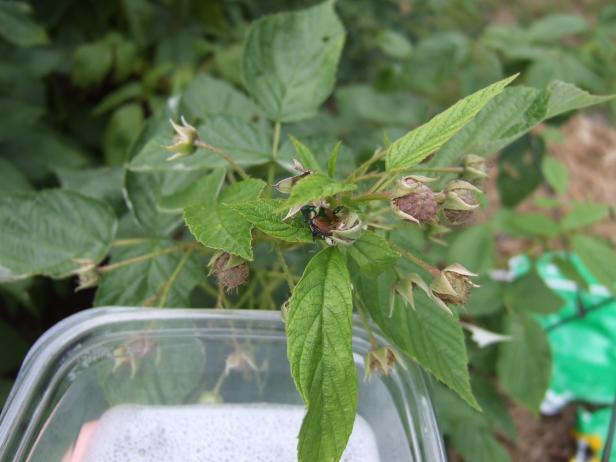
Julie Martens Forney
One way to get rid of Japanese beetles is to knock them into sudsy water for a quick and easy kill.
Louise Romanow, an entomologist and master gardener trained at North Carolina State University explains, "Japanese beetles are a problem with many kinds of foliage; they can be even more of a problem for people with their lawns while they're still in the grub stage. Basically, they just eat away at the root systems of the grass and they leave terrible brown patches all over the place from the damage."
Many commercial treatments of these grubs can lead to other issues explains Romanow. "The chemicals people tend to put down to deal with the problem are indiscriminate, so they end up killing everything. They kill the bad beetles, but they also kill the good beetles. There are lots of predaceous (pest eating) beetles in there too."
When Japanese beetles appear each summer, you have two opportunities to deal with them effectively: Attack adults in summer or newly hatched grubs in early fall.
10 Ways for Getting Rid of Japanese Beetles
1. Hand-Pick Beetles
Knock beetles into water with a few drops of dish detergent added. Wear nitrile gloves to help eliminate the creepiness of touching beetles. Entomologists report the best time of day to gather beetles is 7 p.m. Gathering at other times of day helps reduce feeding damage, but you'll catch the most in early evening.
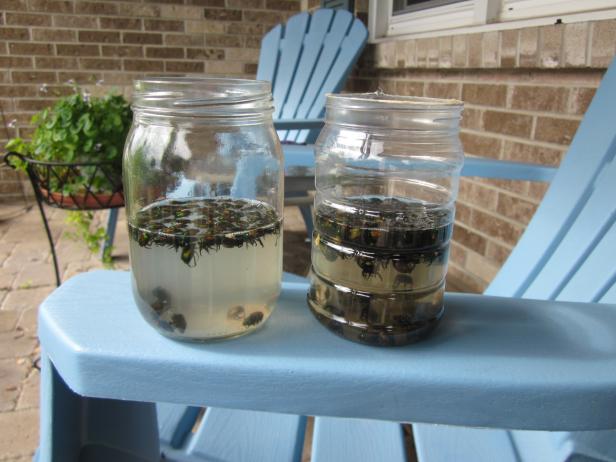
Julie Martens Forney
Use containers of collected Japanese beetles near plants the beetles love. The smell of the rotting insects acts as a repellent.
2. Japanese Beetle Trap
Trap effectiveness is hotly debated because they do bring more beetles to your yard than are already there. Most experts agree that using traps is not the best choice because traps only catch 75 percent of the beetles they attract. That leaves 25 percent to attack your prize plants. If you decide to use store-bought or DIY Japanese beetle traps, you'll get best results by setting out traps early in the season, so you catch beetles before they lay eggs. Site the trap at least 50 feet away from desirable plants. Empty the trap daily. Dead beetles that accumulate in the trap actually act as a repellent. Feed the beetles to pet poultry or pond fish. Freeze surplus beetles for a ready-made fish or chicken treat.
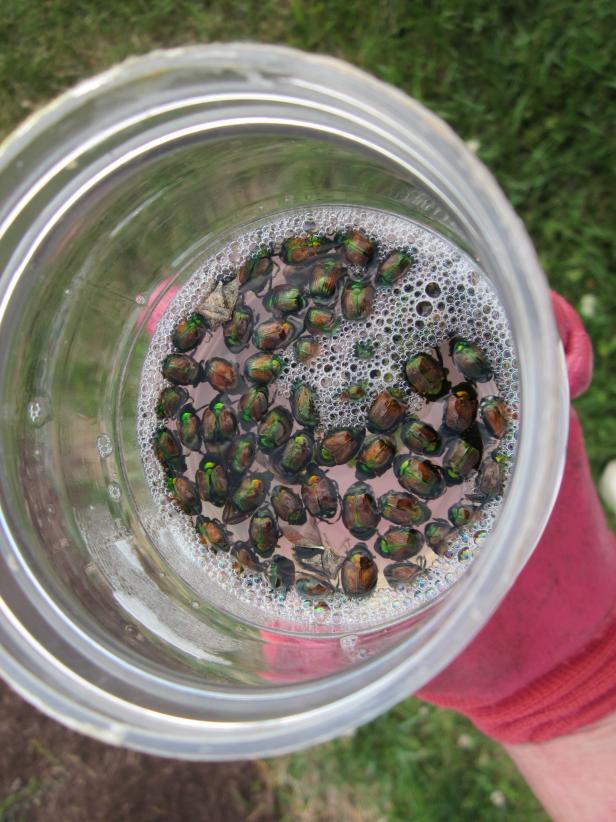
Julie Martens Forney
A simple solution of a squirt or two of dish washing soap and water provides an effective trap for Japanese beetles.
3. Repel Beetles
The smell of dead Japanese beetles acts as a repellent to other Japanese beetles. Let containers of dead beetles (the ones you hand-pick or collect in traps) sit near desirable plants.
4. Make a Spray
This method is not for the faint of heart. Toss dead beetles in a secondhand blender, add a little water, and liquefy the bugs. Add more water, strain out the beetle parts and spray the solution on plants. Reapply after rain.
How to Get Rid of Grubs
Grubs are the larvae of various scarab beetle species, including Japanese beetles. Grubs feed on the roots of your lawn and plants. Take control before these destructive pests get out of hand.
5. Apply Pesticide
Neem organic insecticide/fungicide is effective against adults. Avoid using systemic pesticide treatments that you pour on soil so roots take up the chemical. The active ingredients in some of these products have been implicated in honey bee colony collapse disorder.
6. Use A Trap Crop
Plant a row of Japanese beetle favorites in another part of your yard to lure beetles to one place. Good beetle bait plants include African marigold, borage, evening primrose and knotweed. Hand-pick beetles from the trap crop, or use a bug vacuum, which you can find online or at larger garden centers.
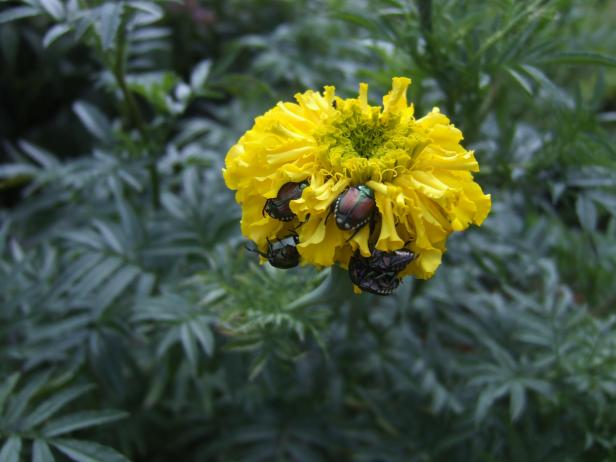
Julie Martens Forney
Plant a trap crop — a plant that Japanese beetles love, like marigolds — to lure the beetles to a certain part of your garden, where you can hand pick or vacuum beetles.
7. Skewer Grubs
In early fall, Japanese beetle grubs (the precursor to the flying menace) are feeding on grass roots in your lawn. They’re near the soil surface at this point and most vulnerable to treatments. An easy treatment is strapping on a pair of lawn aerating sandals (which actually do nothing to aerate the lawn). Entomologists report the spikes are the ideal length for spearing grubs. Focus efforts on any areas of your lawn that are browning. You can also use the spikes in early spring when soil temps hit 60 degrees (search for average soil temps online). It's one of the few treatments that works against adult grubs.
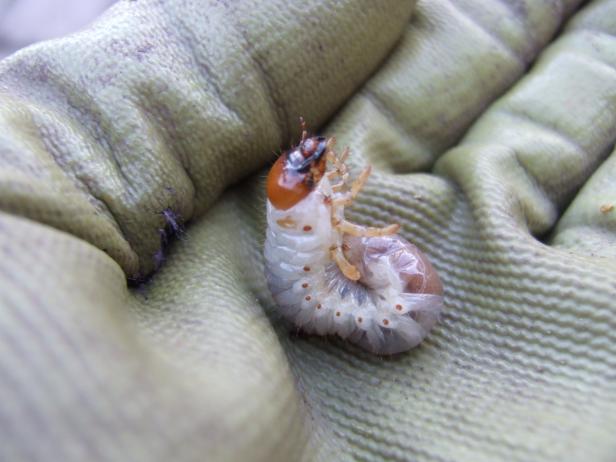
Julie Martens Forney
Grubs are the precursor to various types of beetles. One of the most destructive grubs is Japanese beetle, which lives in turf.
8. Spray Nematodes
Soil dwelling nematodes (they're like microscopic worms) are naturally occurring predators that hunt down grubs and kill them. The type that's best is Heterorhabditis bacteriophora. Buy them through a company that specializes in selling beneficial insects. Apply in early fall and/or spring. Nematodes need to be applied annually — they don't build up in soil.
9. Welcome Predators
Birds are probably easiest to attract to your garden. Provide food, shelter and water, and birds will rally to your yard. Some birds, like catbirds, cardinals and robins, eat the beetles. Others, including starlings and crows prefer the grubs. When flocks of starlings walk through your yard in autumn, they're often digging up grubs. Tachinid flies (above) show up when beetle numbers are high. They lay eggs on the heads of Japanese beetle adults. When eggs hatch, larvae bore into the beetle to feed and live, which kills the beetle. Like many beneficial insects, adult tachinid flies feed on nectar. They prefer flowers like dill, fennel, sweet clover, gomphrena and mint.
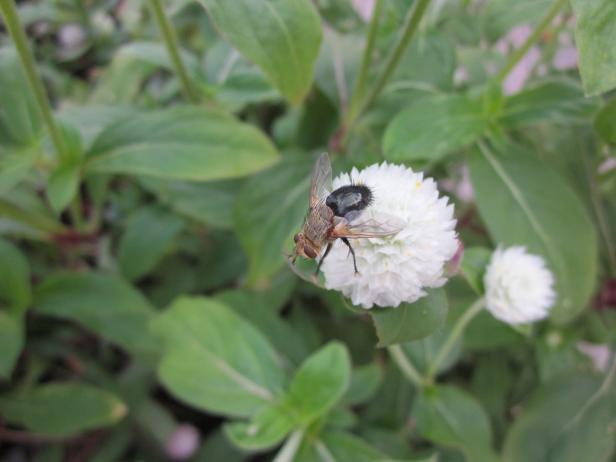
Julie Martens Forney
The tachinid fly is a beneficial insect that lays its eggs on Japanese beetles. When the eggs hatch, the beetle larvae bore into the Japanese beetle, essentially eating it from the inside out.
10. Don't Water Your Lawn
Japanese beetles prefer well-watered turf for egg laying. That's because the eggs need moisture to develop. Limit your lawn's attractiveness to egg-laying beetles by not watering grass during beetle season — roughly late June to late July. Instead, let grass go dormant.









